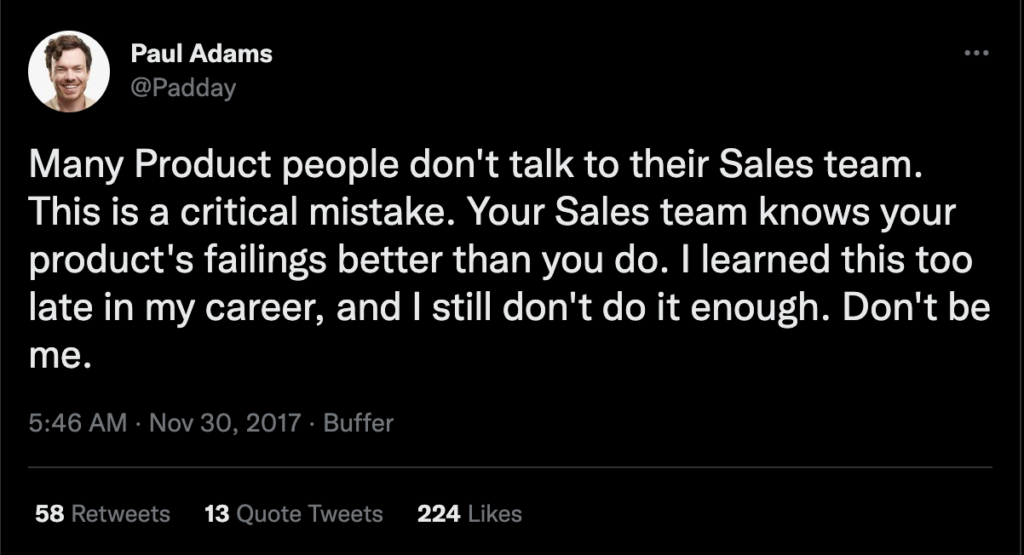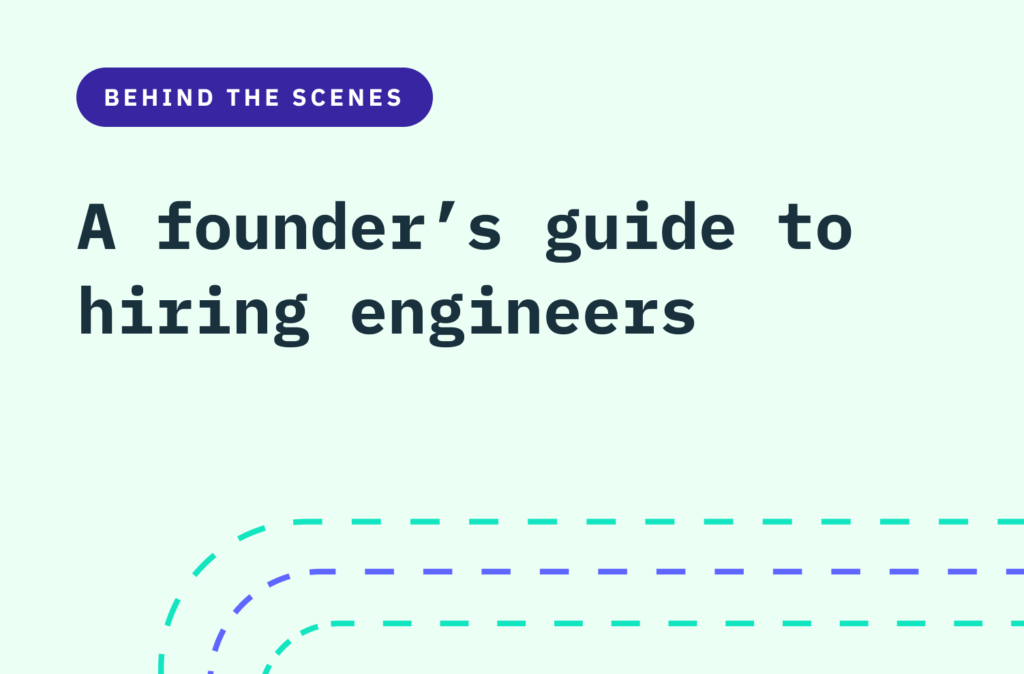Back to blog
Go big or go home: why it’s never too early to think about enterprise
Company
Sep 28, 2022
Author: Pete Prowitt

After working in B2B SaaS over the past decade-plus one of my favorite questions is, “Should we expand into enterprise sales?”
I love this question because it tests the scale of a company’s ambition, the clarity of their vision and the viability of their product. Those who can successfully bridge the gap from SMB to enterprise dominance are rewarded when raising capital, getting acquired, or by the public markets (examples here, here, and here).
But making the transition to enterprise has significant challenges, like longer deal cycles, greater acquisition costs, and less revenue predictability. The companies that make this transition successfully are the ones that lay the groundwork early on for the shift to enterprise.
In this article, I’ll cover the five key actions companies can take today to make sure if and when the time comes to shift to enterprise, they’re ready.
Because “enterprise” can be used to refer to any number of companies, for the purposes of this article we’ll define “shift to enterprise” more broadly as the shift to larger customers with more complex needs and greater revenue potential. Whether for your company that means 500+ or 500,000+, the takeaways below still hold.
5 key actions to prepare for a shift into enterprise sales
1. Mind (and fill) your product gaps
This sounds like a no-brainer, but you won’t get far with your sales efforts if there are major gaps between enterprise expectations and what your product can deliver.
To close those gaps, you need to continually:
- Assess the specific needs of your target customers
- Pressure test your product-market fit with buyers
- Shift your roadmap as needed to prioritize your target customers’ needs
As an example, early on at Stytch we were laser-focused on passwordless solutions. Over time though, we discovered a critical mass of customers weren’t ready to go fully passwordless, and instead wanted to support it for only subsets of their users. This was especially true of more upmarket prospects.
To make ourselves more enterprise-friendly, we shifted our priorities and built our own passwords solution to offer alongside our suite of passwordless products. We’ve since made investments in products like differentiated CAPTCHA and Single Sign-On solutions with a similar aim to close any gaps between our products and our prospective customer requirements.
As a result of these roadmap changes, we’ve broadened our total addressable market and created a compelling offering that has strengthened our enterprise position. If we hadn’t listened to our enterprise customers or been agile enough to shift our product roadmap, we’d have missed out on this upmarket TAM.
2. Tailor your playbook
The process of selling to the enterprise is completely different from selling to SMBs: each requires tailored sales motions.
With smaller companies, the person you are selling to likely is both the end-user of your product and the economic buyer. You often have less than three people involved in an evaluation and can make a buying decision in less than 14 days. For these customers, you want your sales motion to optimize for speed, ease of evaluation, efficiency, and volume. Think freemium or “product-led” growth strategies where sales reps are managing a high volume of deals.
In stark contrast, enterprise sales processes involve more stakeholders, more time, and more organizational hurdles. Companies of 100+ employees will involve on average 7 people when deciding to buy software, and often take months to close a deal. This requires a more hands-on approach: sales teams need a detailed understanding of your customers’ strategic priorities and KPIs. They should also consider leveraging partnership-selling between Account Executives and Solution Engineers to offer more tailored advice.
With all the different stakeholders and stages involved, enterprise deals can get complicated quickly. Consider visually mapping out the path to close to help navigate these lengthy, complex buyer journeys.
3. Maximize the impact of your people, and automate everything else

To effectively capture upmarket opportunities, it’s critical to understand where to leverage people and where to streamline with automation. This requires answering the following questions:
- Do prospects understand your value proposition and differentiated solution from the outset, or does this only occur when a person presents it to them?
- How complex is your product, and how easy is it for a customer to start using it?
- How quickly in an evaluation will a customer realize value?
- Which milestones do customers clear easily on their own, and where do we see significant dropoff?
- How do these friction points map to customers of different financial value?
These questions will reveal the mission-critical junctures where you need people to sell your product, and the easier hurdles that you can leave to automation. In short: reserve your talented, creative, and expensive salespeople for the customers and moments where they have the greatest incremental impact, both on your customers and your business.
4. Learn to sell to strangers — invest in outbound before you think you need to
In the early days of growth, your company will likely employ founder-led sales to win your first set of customers. Companies at this stage often critically mistake founder-led customers as indicative of their product-market fit at scale. Your early customers will likely be early adopters willing to take a risk on a fledgling startup, and these sales likely won’t be reproducible at scale. As such, your true ideal customer profiles or sales playbook won’t reveal themselves until you’ve learned how to sell to strangers.
This is where outbound comes in.
In learning to sell to strangers, early outbound sales will give you the opportunity to:
- Programmatically test messaging against target personas
- Go deeper in your understanding of your buyer and their needs
- Get a better signal around what does and doesn’t work with your go-to-market strategy
- Identify key objections and sticking points to address in your sales playbook
All of this helps you refine your sales toolkit in the ways you’ll need for the longer, multi-stakeholder processes that enterprise sales require.
5. Build a strong feedback loop between EPD and GTM

Your sales team should be a conduit for customer feedback early on (something I’ve written about in the past). Because enterprise has more stakeholders with unique requirements than SMBs, it’s also important to invest in frameworks and rituals to organize that feedback in a way that’s easy to draw from later on. If you cannot adequately categorize and prioritize the needs of enterprise customers, you run the risk of missing critical components or prioritizing your efforts against the wrong needs.
To encourage early adoption and collaboration between your GTM and EPD teams, they should work together to:
- a) Decide on a framework to track and prioritize customer requests
- b) Agree on a regular cadence for discussing and evaluating them
Whether your teams are meeting once a month or once a quarter, the key is to establish this flywheel early on so your product can evolve with you as you scale. Here’s an example framework I use with my team that can get you started.
Recap
So, should you move your sales team upmarket? For most companies the answer is eventually “yes," but make sure you’re prepared for the road ahead. If enterprise sales will be important to your business, make sure to:
- Mind (and fill) the gaps: make sure your product is ready by regularly mapping customer requests against your roadmap. Adapt and prioritize accordingly.
- Tailor your playbook: enterprise sales are more complex than selling to the SMB, ensuring your team has adequate coverage and understanding of their customers is key to their success.
- Maximize the impact of your people, and automate everything else: selling to the enterprise doesn’t mean you have to abandon product-led or freemium strategies, you simply need to choose the right approach for the right customer based on your growth ceiling.
- Learn to sell to strangers–invest in outbound before you think you need to: outbound selling helps you validate product-market fit, ideal customer personas, and importantly teaches you how to “sell to strangers.”
- Build a strong feedback loop between EPD and GTM: enterprise customers will have different needs than their SMB counterparts, ensuring you deeply understand and rigorously prioritize them is critical to your success and that of your engineering team.
While this isn’t a comprehensive guide on building enterprise sales teams, these principles have served me well at past companies and guide our thinking as we expand into enterprise sales at Stytch. I hope that they are helpful to you, and would love your thoughts or feedback at pete@stytch.com. In the meantime, good luck on your enterprise journey.
Authentication & Authorization
Fraud & Risk Prevention
© 2025 Stytch. All rights reserved.


